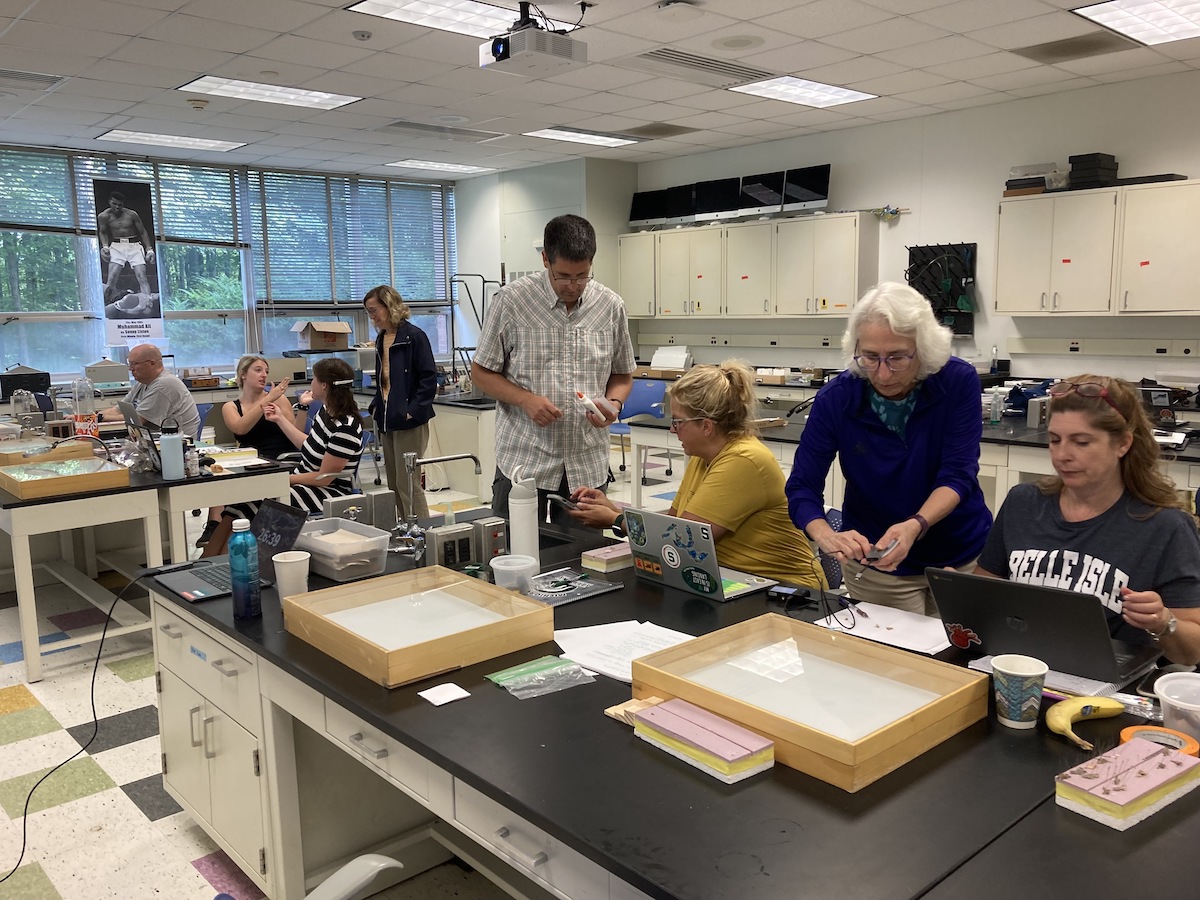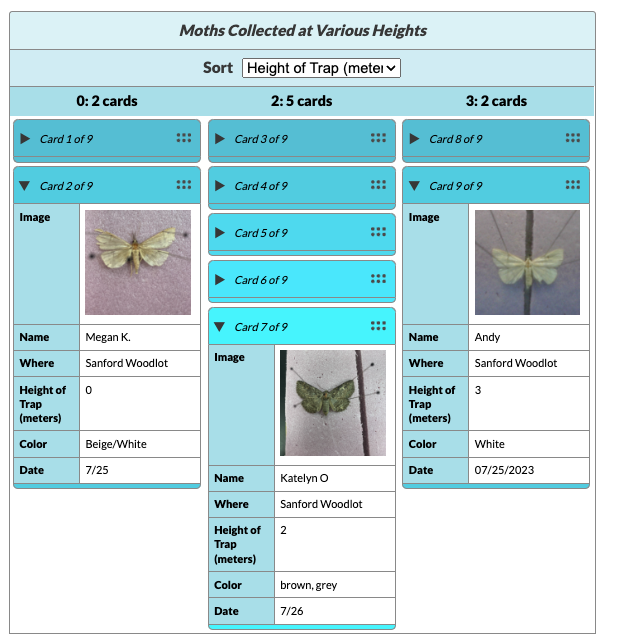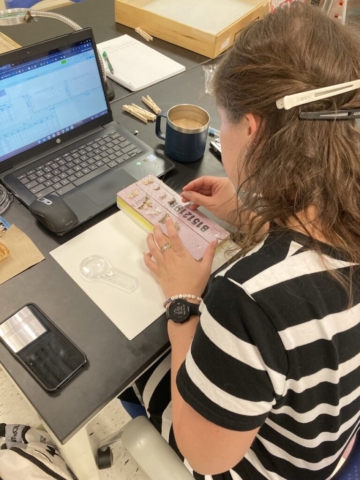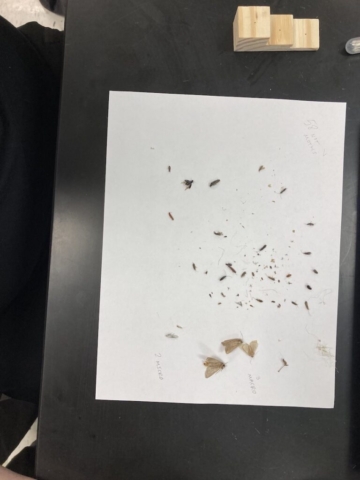Moths live around the world. Despite their ubiquity, they haven’t been studied nearly as much as their daytime counterparts, not even by entomologists. Butterflies have gotten most of the attention.
The MothEd: Authentic Science for Elementary and Middle School Students project is exploring ways to deepen independent science inquiry learning in young learners using technology and, you guessed it, moths. The topic provides a powerful context for field science inquiry: Are moths more likely to be found near street lights or porch lights, near trees or bushes? Do they prefer flower gardens or wooded lots? How warm does it have to be for moths to be out?

This summer, we spent four days co-designing the next implementation of the MothEd curriculum with five elementary and middle school teachers, entomologists, and learning scientists in science labs at Michigan State University (MSU), where the project is based. We trapped and pinned moths, and documented our research questions with the Concord Consortium’s Collaborative Learning User Environment (CLUE), using the same process and platform students will use during the school year. Our goal was to plan how students can study moths in the context of field science.
We built simple traps out of two-liter soda bottles to catch moths in the overnight hours, then study them up close. The highlight of each day was emptying our traps, sorting moths from “not-moths,” and carefully pinning the moths to see the markings on their wings.
Teachers collected and sorted moths from “not-moths” and then pinned them in order to fully reveal their wing patterns.
Using the CLUE software, teachers and students can document their research, including collaborative work on research questions, data collection, and analysis of their moth trap catches. Users can build decks of “data cards” to represent their moths, adding categories (e.g., color, size, temperature, moon phase, etc.) to organize and analyze their findings. Once a deck of data cards is constructed, users can sort them by categories and view them in tables or graphs to visualize their results.

With data cards on the CLUE platform, users can sort moths based on categories, such as color or where the moths were trapped.
But while moths live in most habitable places around the planet, they are not necessarily around all the time. During the Michigan school year, for instance, the weather is such that there are just a few short weeks in September and June when moths can be trapped.
To extend the learning opportunities, the elementary school teachers are planning to weave moth topics throughout the school year, providing moth-themed reading materials in English Language Arts and building graphs of actual moth data from their collections when students are learning graphing skills in mathematics. As the middle school science teachers’ schedules and content are more constrained, they will kick off the school year with MothEd activities, which build both critical teamwork skills with new classmates and field science practices, then take up their research questions in June when the moths are out again.

Teachers brought moths their students had captured to share with each other. These are displayed in DIY collection boxes made from decorated kids’ shoeboxes and clear plastic face shields.
During the workshop, we also took a walking field trip to MSU’s “Bug House” for local teachers to plan possible school visits during the year. Ultimately, the MothEd project plans to build a shared database of moth captures over time to contribute to the ongoing moth research in Dr. Peter White’s entomology lab at Michigan State University. We believe that moths are fascinating and deserve just as much study as similar species.

